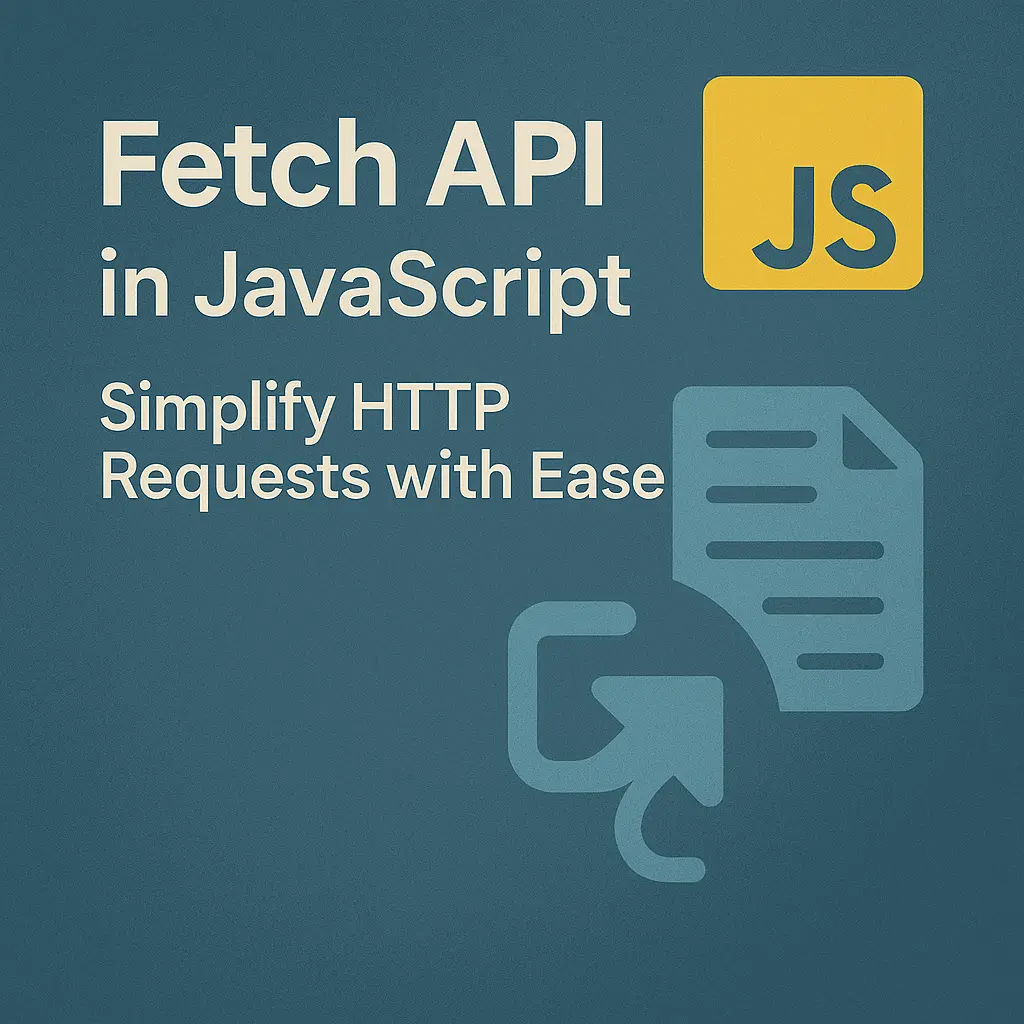Introduction to Fetch API
JavaScript Fetch API provides a way to fetch resources asynchronously across the network. It is more powerful and flexible compared to its predecessor, XMLHttpRequest. Fetch API is promise-based, making it easier to handle asynchronous operations without nesting callbacks.
fetch(url)
.then(response => response.json())
.then(data => console.log(data))
.catch(error => console.error('Error:', error));
In the example above, fetch() initiates an HTTP request. It returns a promise that resolves to the Response object representing the response to the request.
Making GET, POST, PUT, DELETE requests
Fetch API supports various HTTP methods such as GET, POST, PUT, and DELETE. You can specify the method in the fetch options object.
// GET Request
fetch('https://api.example.com/data')
.then(response => response.json())
.then(data => console.log(data))
.catch(error => console.error('Error:', error));
// POST Request
fetch('https://api.example.com/data', {
method: 'POST',
body: JSON.stringify({ key: 'value' }),
headers: {
'Content-Type': 'application/json'
}
})
.then(response => response.json())
.then(data => console.log(data))
.catch(error => console.error('Error:', error));
Similarly, you can make PUT and DELETE requests by specifying the method in the options object.
Handling responses (JSON, text, blob)
Fetch API provides various methods to handle different types of responses efficiently.
// Handling JSON response
fetch('https://api.example.com/data')
.then(response => response.json())
.then(jsonData => console.log(jsonData))
.catch(error => console.error('Error:', error));
// Handling text response
fetch('https://api.example.com/text')
.then(response => response.text())
.then(textData => console.log(textData))
.catch(error => console.error('Error:', error));
// Handling blob response (e.g., images)
fetch('https://example.com/image.jpg')
.then(response => response.blob())
.then(blobData => {
// Create an object URL from the blob
const imageUrl = URL.createObjectURL(blobData);
console.log(imageUrl);
})
.catch(error => console.error('Error:', error));
Error handling with Fetch API
Handling errors gracefully is crucial in any application. Fetch API simplifies error handling through promises.
fetch('https://api.example.com/data')
.then(response => {
if (!response.ok) {
throw new Error('Network response was not ok');
}
return response.json();
})
.then(data => console.log(data))
.catch(error => console.error('Error:', error));
In the above example, if the network response is not successful (i.e., response.ok is false), an error is thrown.
Conclusion
JavaScript Fetch API is a powerful tool for making asynchronous HTTP requests in web applications. Its simplicity and flexibility make it a preferred choice for developers. By understanding how to make various types of requests, handle responses efficiently, and manage errors gracefully, developers can harness the full potential of Fetch API in their projects. Start integrating Fetch API into your applications today to streamline network requests and enhance user experience.
Remember to handle errors effectively, as this ensures a robust and reliable application. Explore further and experiment with Fetch API to discover its full range of capabilities and elevate your web development skills.






